8 Large Cat Breeds You’ll Fall in Love With

Most cats are known for being smaller in size, and many pet owners gravitate toward them for that exact reason. But if you believe in the idea that “bigger is better,” there are plenty of options for you, too. No, we’re not suggesting you bring home an actual big cat, like a tiger or leopard. We’re talking about the several domesticated cat breeds that tend to be on the bigger side. These felines often have larger-than-life personalities to match their build, and they can make an excellent addition to your home. Read on to learn more about eight large cat breeds you’re sure to fall in love with.
RELATED: 29 Fun Cat Facts You Never Knew About Your Furry Friend.
What should people know before they consider a large cat breed?
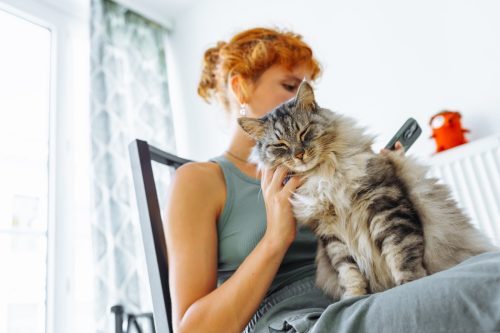
The size differences between domestic cat breeds are not as extreme as the ones seen in dog breeds.
“While some cats are larger, there’s really no accepted class of ‘large cat breeds’ like there are in dogs,” explains Mikel Delgado, PhD, cat behavior expert with Rover.
Still, there are some cat breeds that do tend to be larger than your average domestic cat—which is why it is “essential to research thoroughly and prepare for the long-term commitment of owning a large breed cat,” according to Kathryn Dench, MA, VetMB, holistic and integrative veterinarian and chief scientific advisor at Paw Origins in Chicago.
“They offer immense companionship and joy, but also come with responsibilities that match their size,” she cautions. “Potential owners should understand that large cat breeds often require more space and more robust equipment, such as larger litter boxes and sturdier scratching posts. Additionally, due to their size, these breeds may have different dietary needs and potential hereditary health issues.”
With that in mind, large cat breeds often do better in bigger households with “families and individuals who appreciate a more interactive and visible presence in their pets,” according to Dench. “They require owners who are prepared for a higher level of physical engagement and possible higher healthcare costs.”
Still curious about these mighty meowers? Read on for eight cat breeds that are on the larger side.
1
Maine Coon
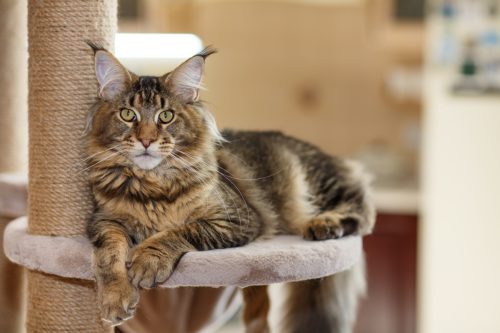
One of the most well-known large cat breeds is the Maine Coon—and it’s also one of Dench’s favorites, she tells Best Life.
“This breed typically weighs between 10 to 25 pounds, with males generally being larger,” she shares. “They also have a life expectancy of around 12 to 15 years.”
Maine Coons are “excellent companions,” according to Dench.
“This is because they are known for their friendly and sociable nature,” she says.
RELATED: Why Do Cats Make Biscuits? Veterinarians Weigh In.
2
Bengal

If you like the look of big wild cats, you’ll probably be a fan of the domesticated Bengal cat. This breed resembles a Bengal tiger, but is actually a hybrid of an Asian leopard cat (ALC) and a domestic cat, according to Nationwide’s Pet HealthZone.
As ASPCA Pet Health Insurance notes, Bengal cats tend to be medium to large in size—so while on the larger side, they won’t be the largest cat breed you can take home. The breed tends to weigh around 8 to 15 pounds, and has a height range of about 13 to 16 inches.
3
Ragdoll
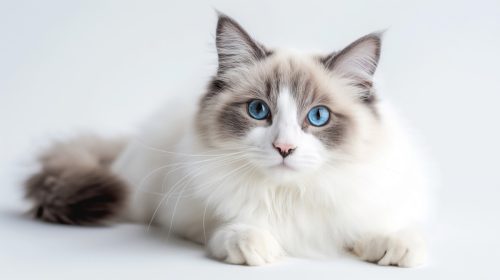
Another notable large cat breed is the Ragdoll. These adorable felines are “known for their striking blue eyes and gentle demeanor,” according to Dench.
“They weigh approximately 15 to 20 pounds and have similar lifespans to Maine Coons,” she notes. “But unlike Maine Coons, Ragdolls are characterized by their calm and relaxed temperament, which contrasts with the more playful and active nature of the Maine Coon.”
How relaxed are they? Well, they’re called Ragdolls for a reason—these cats usually go limp when picked up.
Ragdolls are also known for having long coats, says Carly Fox, DVM, senior veterinarian in the Emergency and Critical Care unit at the Schwarzman Animal Medical Center in New York.
“Due to this, these cats must be groomed weekly to prevent mat formation,” she says.
RELATED: 8 Cats That Don’t Shed, According to Veterinarians.
4
Ragamuffin
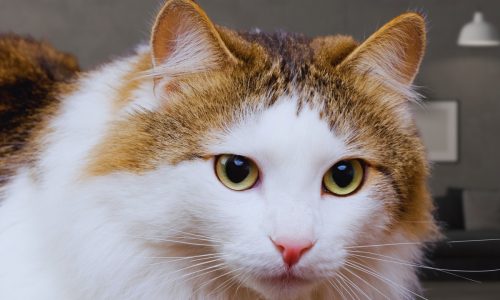
Ragamuffins are closely related to Ragdolls, which you can see in their shared characteristics of being large and longhaired, according to Cat Fanciers’ Association (CFA).
Ragamuffin cats fall on the medium to large size, but they may be slow to mature. CFA says it can take up to four years for this breed to reach its full growth, which can be up to 20 pounds for males and up to 15 pounds for females.
5
American Bobtail

While American Bobtails are known for their uniquely shortened tails, this breed actually falls on the medium to larger size overall. The average American Bobtail weighs around 7 to 16 pounds, but males tend to be on the heavier side compared to females, according to ASPCA Pet Insurance.
Their bodies are also moderately long, CFA adds. As for personality, the American Bobtail breed is known to be intelligent, easygoing, and tolerant—making it a great choice for households with children and dogs.
RELATED: I’m a Veterinarian and These Are the 4 Cat Breeds I’d Never Own.
6
Norwegian Forest Cat
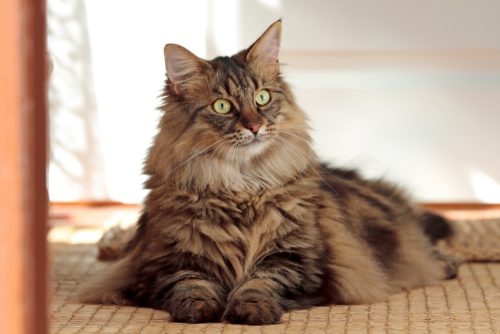
Speaking of “smart, affectionate, and gentle” cats, the Norwegian Forest Cat is another option to consider, according to Fox. As she notes, this breed typically weighs around 12 to 20 pounds, and has a life expectancy of about 12 to 15 years.
“Norwegian Forest Cats love to perch, so having high cat trees available to them is recommended,” Fox shares. “They also love to hunt, so engaging them with feather toys and mouse toys is best.”
Like some of the other large breed cats, this breed is known for having a long coat as well. Fox says you should not forget to regularly groom and brush a Norwegian Forest Cat in order to prevent mats.
7
Siamese
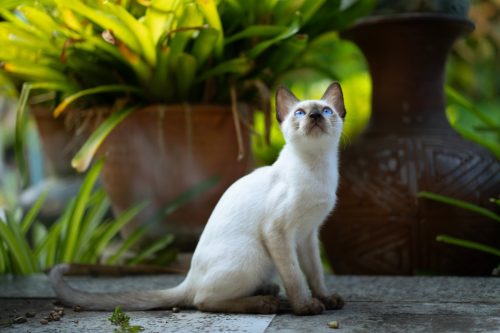
The Siamese cat breed is certainly a popular one, but you may not realize just how large they can be. Aside from the coat of a Siamese, “everything about these cats is long,” according to CFA.
This breed has always been known for its long neck, body, tail, and legs, and during the 1950s, some Siamese cats were bred with rounder heads and heavier bones—adding to their larger stature.
RELATED: How to Trim Cat Nails: A Step-by-Step Guide.
8
Siberian
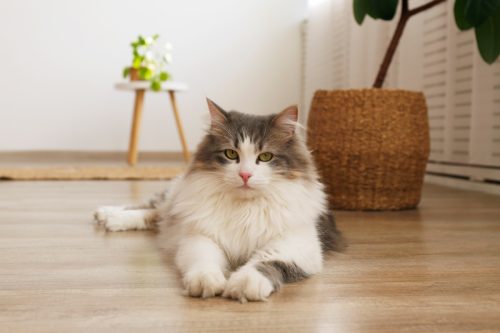
Native to Russia, the Siberian cat breed has a “powerful, muscular structure, with a thick, triple coat” that makes it able to withstand a Russian winter, according to CFA. Because of this, Fox says a “patient, friendly and smart” Siberian can weigh anywhere from 10 to 15 pounds.
“But keeping these cats lean helps decrease the chance of osteoarthritis, diabetes and cancer,” she notes.
- Source: CFA: RagaMuffin
- Source: CFA: American Bobtail
- Source: CFA: Siamese
- Source: CFA: Siberian